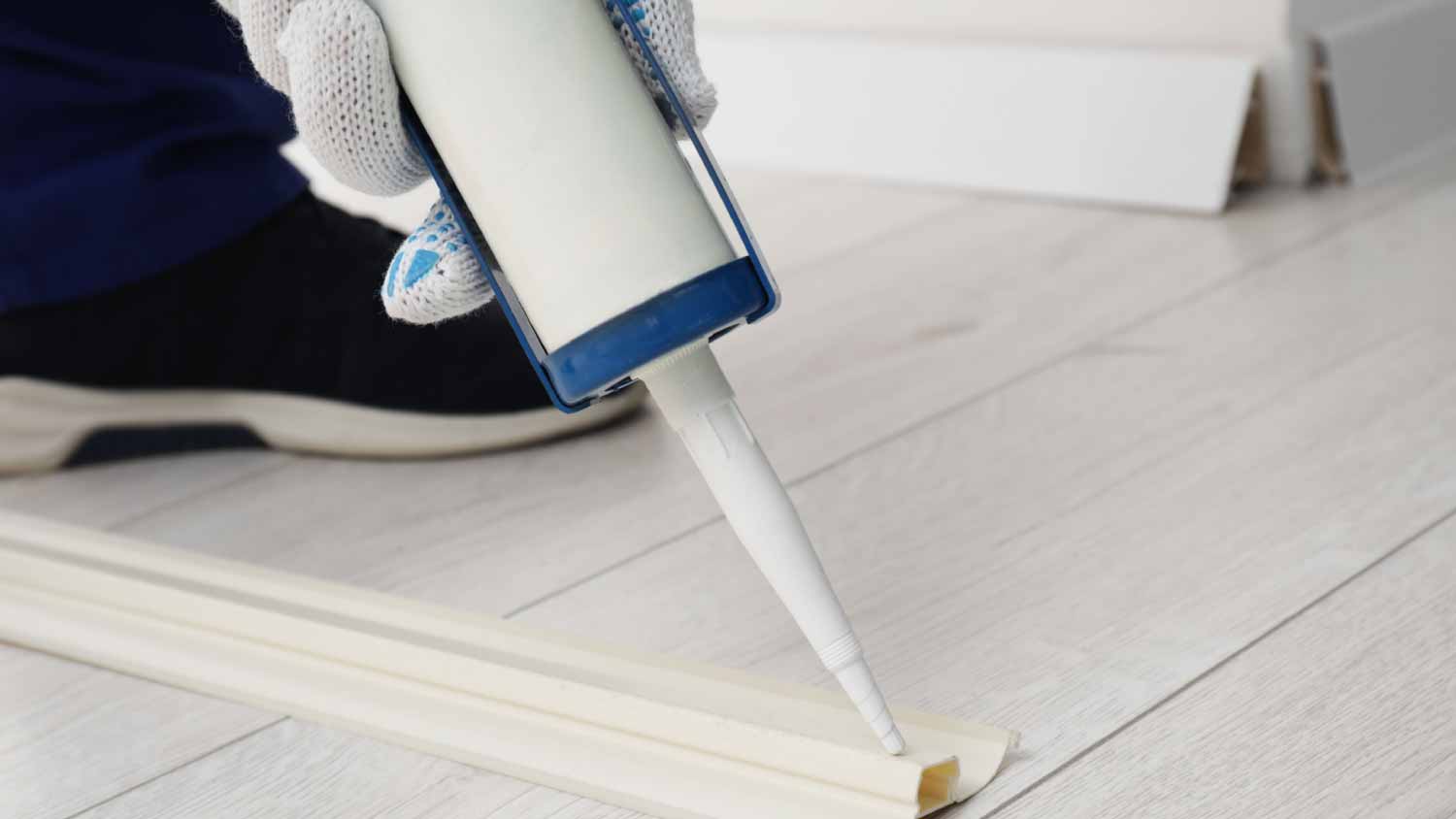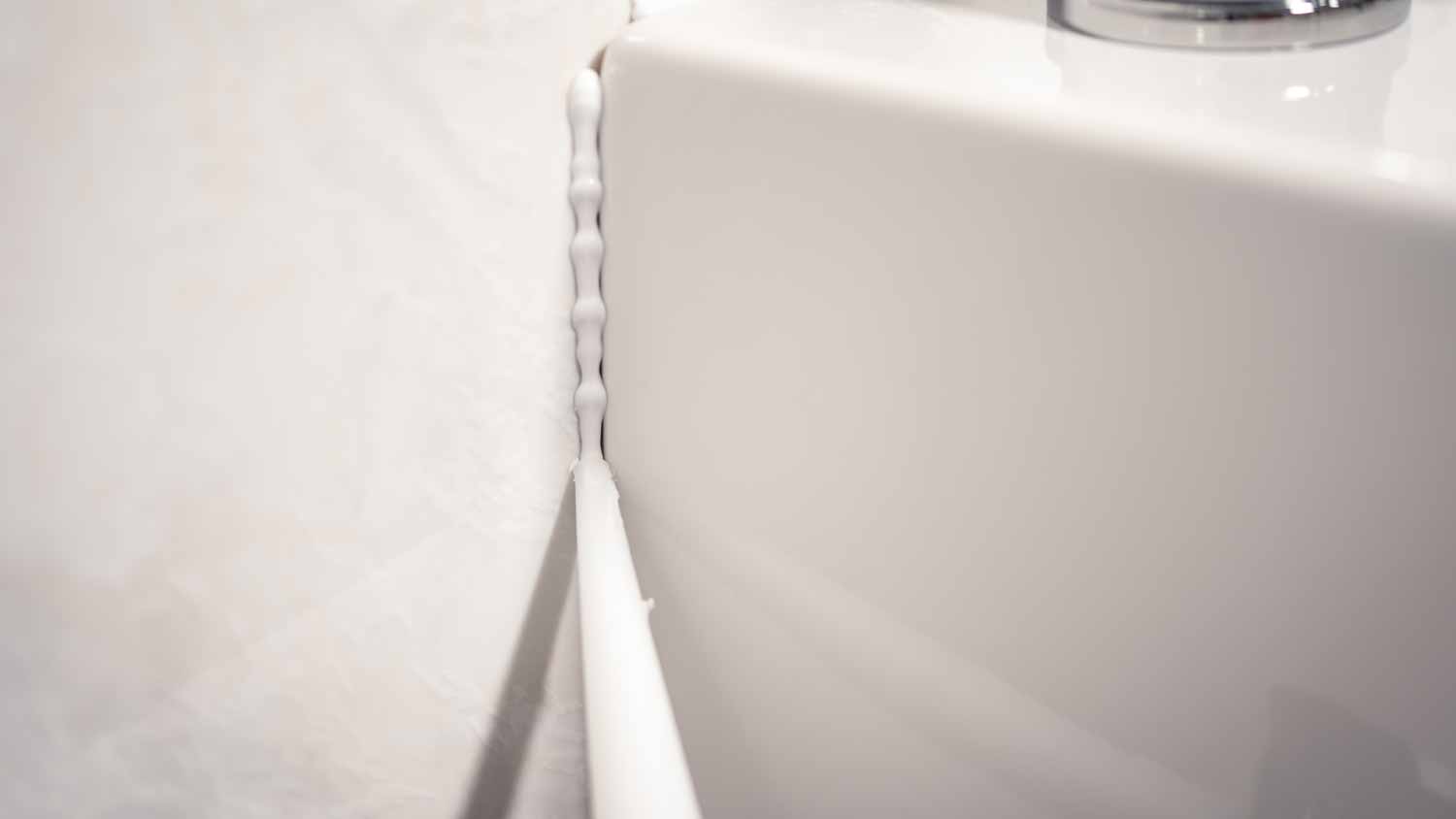Acrylic vs. Silicone Caulk: Which Is Best for Your Project?
Know what’s what before you seal the deal


Acrylic caulk is water-based, while silicone caulk has a rubber-like formulation.
For interior projects and porous surfaces like drywall and wood, choose acrylic caulk.
When sealing exterior areas or spaces where moisture is present, silicone caulk is best.
Its paintability makes acrylic caulk better for projects where aesthetics are important.
Its flexible nature makes silicone caulk a better choice for areas with a lot of movement.
When embarking on a home improvement project, choosing the right caulk can make all the difference in ensuring overall success. The decision between acrylic versus silicone caulk is a common dilemma faced by many DIY enthusiasts and professionals alike. Each type of caulk has its unique properties, making it suitable for different applications. Let’s explore the differences between acrylic and silicone caulk to help you decide which is best for your specific needs.
Acrylic vs. Silicone Caulk: Key Differences
Acrylic caulk, also known as latex caulk, is easy to work with and clean up. It adheres well to porous surfaces and is often used for interior applications such as baseboards, molding, and drywall. Silicone caulk, on the other hand, is known for its flexibility and waterproof properties. It is ideal for areas exposed to moisture, like kitchens, bathrooms, and exteriors.
What Is Acrylic Caulk?

Acrylic caulk is a versatile, water-based sealant that adheres well to a variety of porous interior surfaces. It is sandable and paintable, making it a popular choice for projects where aesthetics are important. While it is less flexible than silicone caulk, it offers ease of use and is perfect for indoor applications.
| Pros | Cons |
|---|---|
| Paintable | Less flexible |
| Easy to apply | Less durable |
| Cleanable spills | Moisture-sensitive |
| Cost-effective | Shorter lifespan |
Best For
Interior trim and molding
Drywall and baseboards
Areas where painting is required
Pros of Acrylic Caulk
Acrylic caulk offers several benefits, particularly for indoor applications. One of the main advantages is its paintability, which allows you to achieve a seamless finish that matches your interior décor. It is also easy to apply and clean up, as it is water-based, making it an excellent choice for beginners.
This type of caulk adheres well to porous surfaces such as wood and drywall, ensuring a strong bond. Additionally, it is generally more affordable than silicone caulk, making it a cost-effective option for large projects where extensive caulking is required.
Cons of Acrylic Caulk
Despite its benefits, acrylic caulk does have some drawbacks. Its lack of flexibility means this caulk can crack or break in areas where movement occurs, making it less suitable for exterior sealing applications as well as doors and windows. Moreover, acrylic caulk does not perform well in wet conditions and may not last as long as silicone caulk in areas exposed to moisture or temperature fluctuations.
The shorter lifespan of acrylic caulk means it may require more frequent reapplication, especially in high-traffic areas or places with environmental stress.
What Is Silicone Caulk?

Silicone caulk is a durable, rubber-like sealant known for its flexibility and water-resistant properties. It is ideal for sealing areas exposed to moisture and extreme temperature changes. While it is not considered paintable due to its hydrophobic properties, its longevity and performance make it a preferred choice for caulking showers, bathtubs, kitchens, and outdoor projects.
| Pros | Cons |
|---|---|
| Highly flexible | Not paintable |
| Moisture-resistant | Difficult to clean |
| Long-lasting | Higher cost |
| Durable | Longer cure time |
Best For:
Kitchens and bathrooms
Windows and doors
Exterior applications
Pros of Silicone Caulk
Silicone caulk is renowned for its flexibility and ability to withstand extreme temperature fluctuations, making it ideal for both indoor and outdoor applications. Its water-resistant properties make it perfect for areas exposed to moisture, such as bathrooms and kitchens, where a strong seal is essential.
This type of caulk is also highly durable and long-lasting, providing a reliable solution that can endure harsh conditions without deteriorating. Its ability to adhere well to non-porous surfaces, like glass and metal, further enhances its versatility in various applications.
Cons of Silicone Caulk
While silicone caulk offers many advantages, it also has some downsides. One of the main drawbacks is its non-paintable nature, which can be a limitation if you need to match the caulk to your interior or exterior colors. Silicone caulk can also be more challenging to apply and clean up due to its sticky texture and longer curing time.
Additionally, silicone caulk tends to be more expensive than acrylic caulk, which might impact the overall budget for large projects. These factors should be considered when deciding if silicone caulk is the right choice for your needs.
Acrylic vs. Silicone Caulk
Choosing between acrylic and silicone caulk depends on factors such as where the caulk will be used, how much moisture the area gets, and the finished look you’re after. Let’s get into specific attributes to help you decide which caulk is better for your project needs.
Durability: Silicone Caulk
When it comes to durability, silicone caulk takes the lead. Its rubber-like properties allow it to withstand extreme temperature changes and resist cracking or breaking, making it ideal for outdoor applications and areas with movement or vibration. While acrylic caulk is less durable in such conditions, it performs well indoors, where environmental stress is minimal.
Length of Life: Silicone Caulk
Silicone caulk has a longer lifespan compared to acrylic caulk. Its resistance to moisture and environmental factors ensures that it remains effective for many years without needing frequent replacement. Acrylic caulk, although adequate for indoor use, may require more regular reapplication, particularly in high-moisture or high-traffic areas.
Moisture Resistance: Silicone Caulk
Silicone caulk excels in moisture resistance, making it the preferred choice for bathrooms, kitchens, and exterior applications where water exposure is common. Its water-resistant properties help prevent mold and mildew growth, ensuring a hygienic environment. In contrast, acrylic caulk is not as effective in wet conditions and may deteriorate or allow moisture penetration over time.
Ease of Application: Acrylic Caulk
Acrylic caulk is generally easier to apply than silicone caulk, especially for beginners. Its water-based formula allows for smooth application and easy clean-up with just soap and water. Silicone caulk, with its sticky texture and longer curing time, can be more challenging to work with and may require the help of a local caulking pro or the purchase of additional tools like a caulking gun for a neat finish.
Curing Time: Acrylic Caulk
Acrylic caulk typically dries and cures faster than silicone caulk, which can take longer to set completely. This quicker curing time can be beneficial for projects with tight timelines or where immediate painting is required. However, the extended curing time of silicone caulk contributes to its superior flexibility and long-lasting performance.
Appearance: Acrylic Caulk
In terms of appearance, acrylic caulk offers the advantage of being paintable, allowing you to achieve a seamless finish that matches your decor. Silicone caulk, while available in various colors, cannot be painted, which may limit its aesthetic appeal if color matching is essential.
Cost: Acrylic Caulk
Your project budget is another factor to consider when choosing between acrylic and silicone caulk, particularly if you’re caulking a very large area. Acrylic caulk is generally more affordable, making it a cost-effective option for projects with large areas to cover or a limited budget. Silicone caulk, while more expensive, provides greater durability and performance, which can justify the higher cost for projects that demand long-term reliability.





- 5 Common Types of Caulk: Which One Is Best for Your Next Project?
- Ranking the Best Caulk for Windows and Finding the Perfect Seal
- What Is Caulk? Discover the Definition, Types, Uses, and Alternatives
- How to Caulk: The Ultimate Step-by-Step Guide to Applying Caulk Like a Pro
- How to Use a Caulk Gun to Apply Caulk Like a Pro
- Caulk vs. Spackle: Understanding the Differences for Your DIY Projects
- Should You Caulk Before or After Painting the Exterior of Your Home?
- What Adhesive Should You Use to Attach Your New Sink to the Vanity?
- How to Seal Windows for Winter: A Complete Guide
- How to Install a Bathtub Liner Yourself in 9 Steps










